Don’t let the thought, “Oh, I can’t do that – it’s too hard” prevent you from doing something you want to do. Especially when it comes to exercises. If you can’t run, walk. If you can’t do jumping jacks, do side toe taps with arm swings. If you can’t jump, lift your knees high. There’s always a modification.
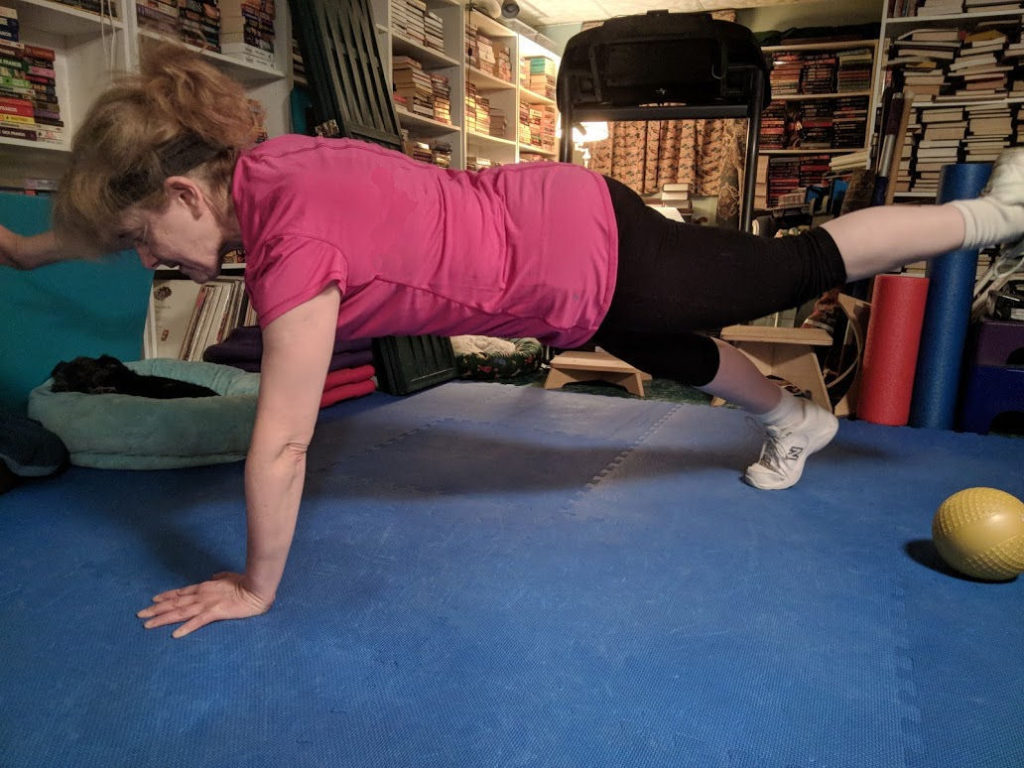
Like with this pose. It’s definitely challenging. It works your core, your legs, your balance, your arms. It works every part of your body – and your mind.
Keep practicing
But it takes practice. I certainly wasn’t able to do this the first time I tried it. But I thought it would be a fun pose to have in my arsenal, so I kept practicing.
I started with this:
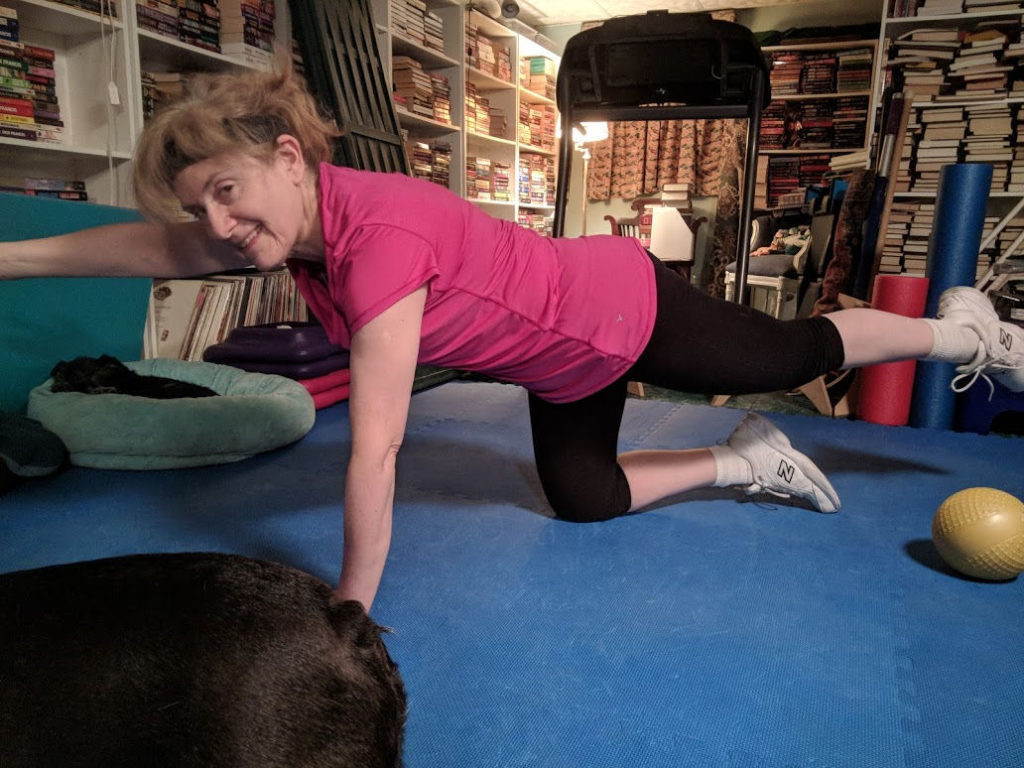
Now, this isn’t exactly a walk in the park either. This modified plank with bird dog uses your core and your balance. You’ll definitely feel your abs fire up when you lift alternate limbs, and your balance will be shaky the first few times. (And, yes, that’s my dog’s butt at the bottom left of the picture!)
And after a few times, I got stronger and felt ready to try the full version of the pose. And that was a laugh. Good thing I was on a mat because I fell on my face.
Don’t give up!
But I didn’t give up. There were other exercises that kept me going – ones that I was comfortable with and that would strengthen my arms, my core, my legs and my balance.
And I kept doing the modified version of the pose to get my body used to a simulation of the movement. To sort of challenge my balance the way that the full version would. And ultimately I tried the full version of the pose – and succeeded!
If you’re not strong enough (yet) for a full push-up, try it from your knees. Or, better yet, on your couch or a chair. Put your hands on the seat, feet on the floor and try that. This simulates the push-up better than from your knees on the floor, but it’s somewhat easier.
The point is, don’t NOT do an exercise. Do a modification.

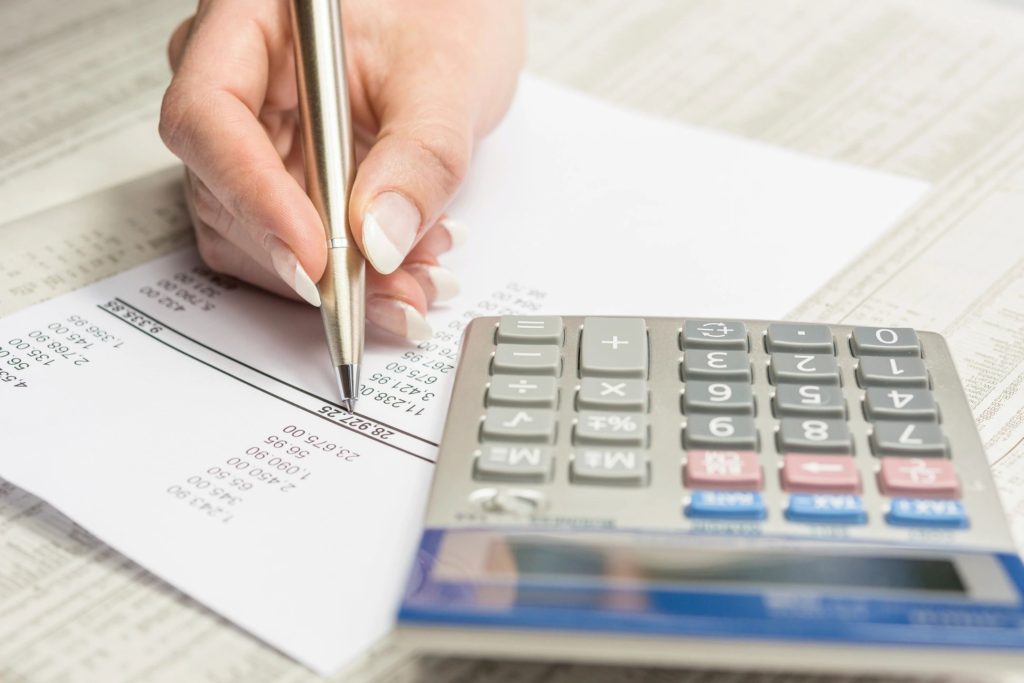

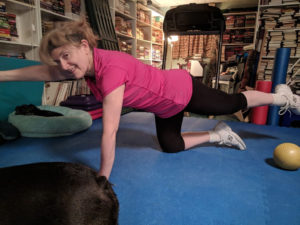
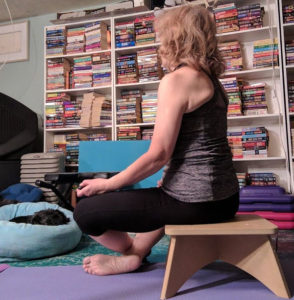

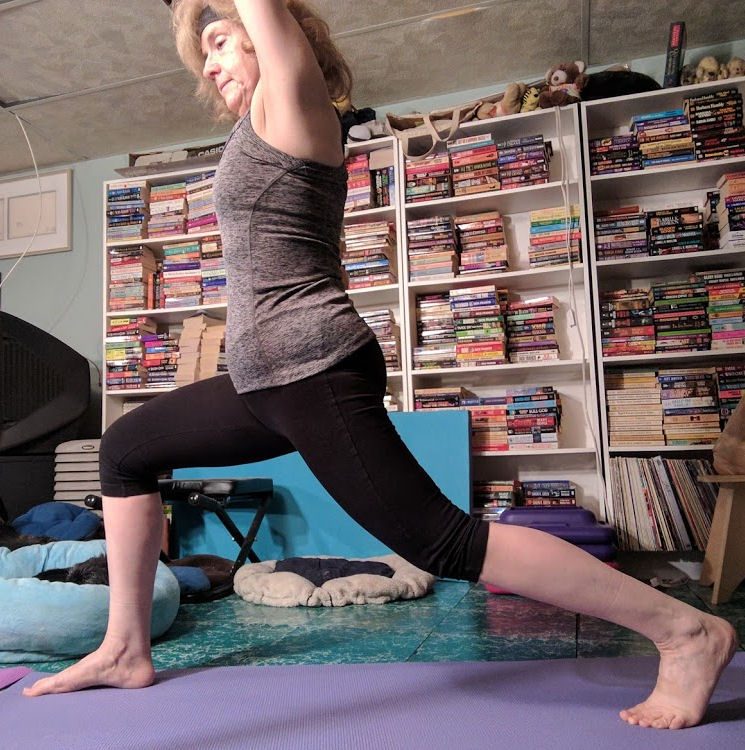 There are millions of yogis around the world celebrating International Yoga Day today. Are you one of them?
There are millions of yogis around the world celebrating International Yoga Day today. Are you one of them?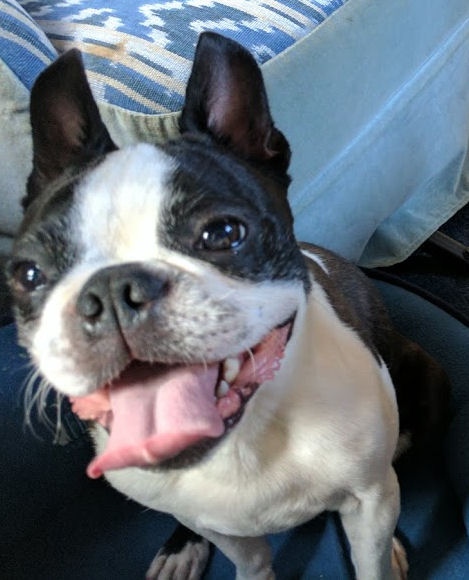 Do you have a dog? If you do, chances are you get more exercise than your neighbors who don’t have a dog. A recent British study shows that people with dogs exercise more than those who don’t own dogs. In fact, dog-owners are 4 times more likely to get the recommended amount of daily activity.
Do you have a dog? If you do, chances are you get more exercise than your neighbors who don’t have a dog. A recent British study shows that people with dogs exercise more than those who don’t own dogs. In fact, dog-owners are 4 times more likely to get the recommended amount of daily activity.
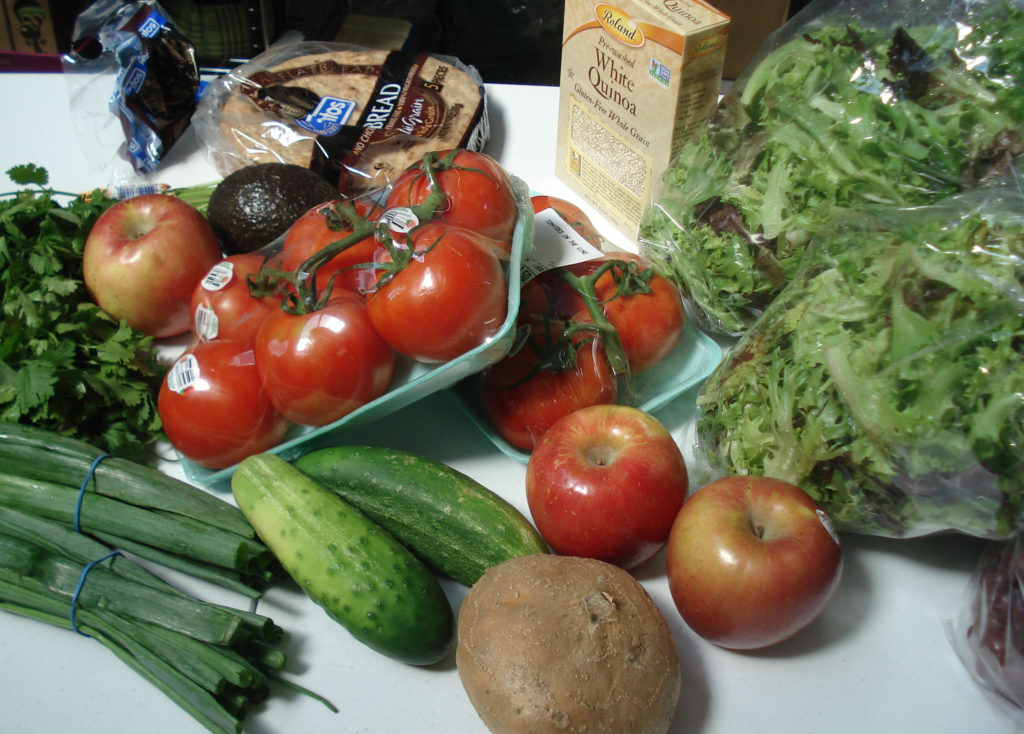

 How’s your weight-loss New Year’s Resolution going? We’re a week into February – have you made progress? It’s hard! I know! I want to eat bagels for breakfast, and mac & cheese for dinner too. But I know that won’t get me closer to my goal. I don’t want to get all hot, tired and sweaty exercising every day. I know those first couple of minutes are torture – so why put myself through that?
How’s your weight-loss New Year’s Resolution going? We’re a week into February – have you made progress? It’s hard! I know! I want to eat bagels for breakfast, and mac & cheese for dinner too. But I know that won’t get me closer to my goal. I don’t want to get all hot, tired and sweaty exercising every day. I know those first couple of minutes are torture – so why put myself through that?